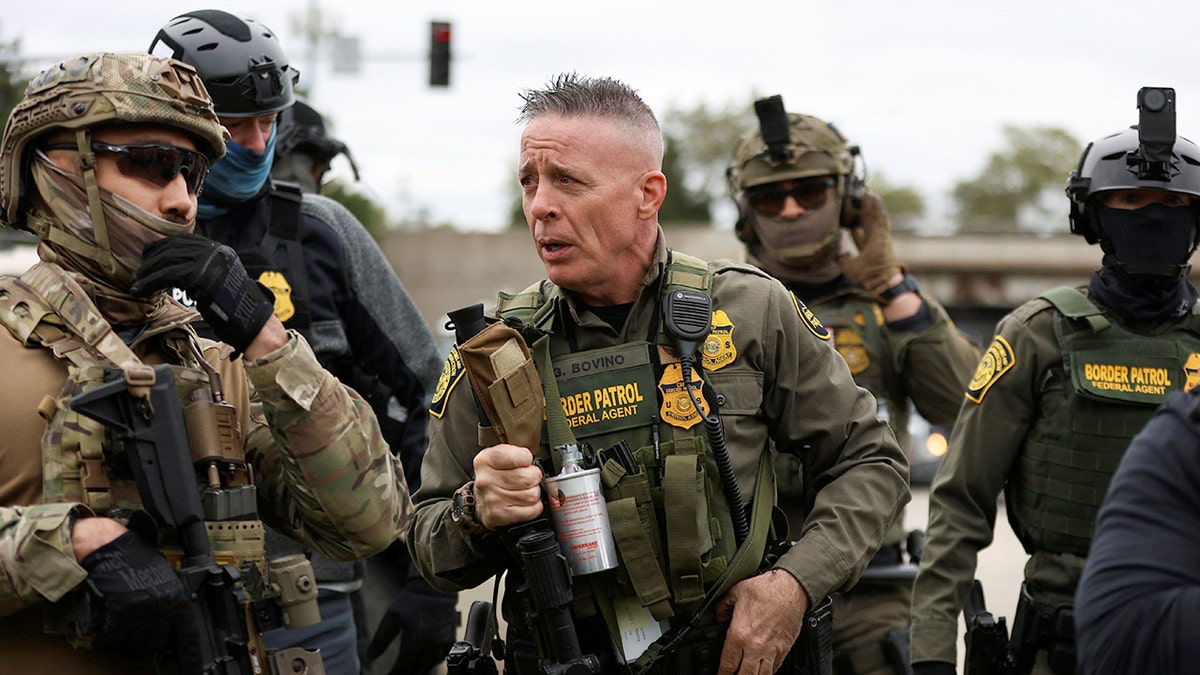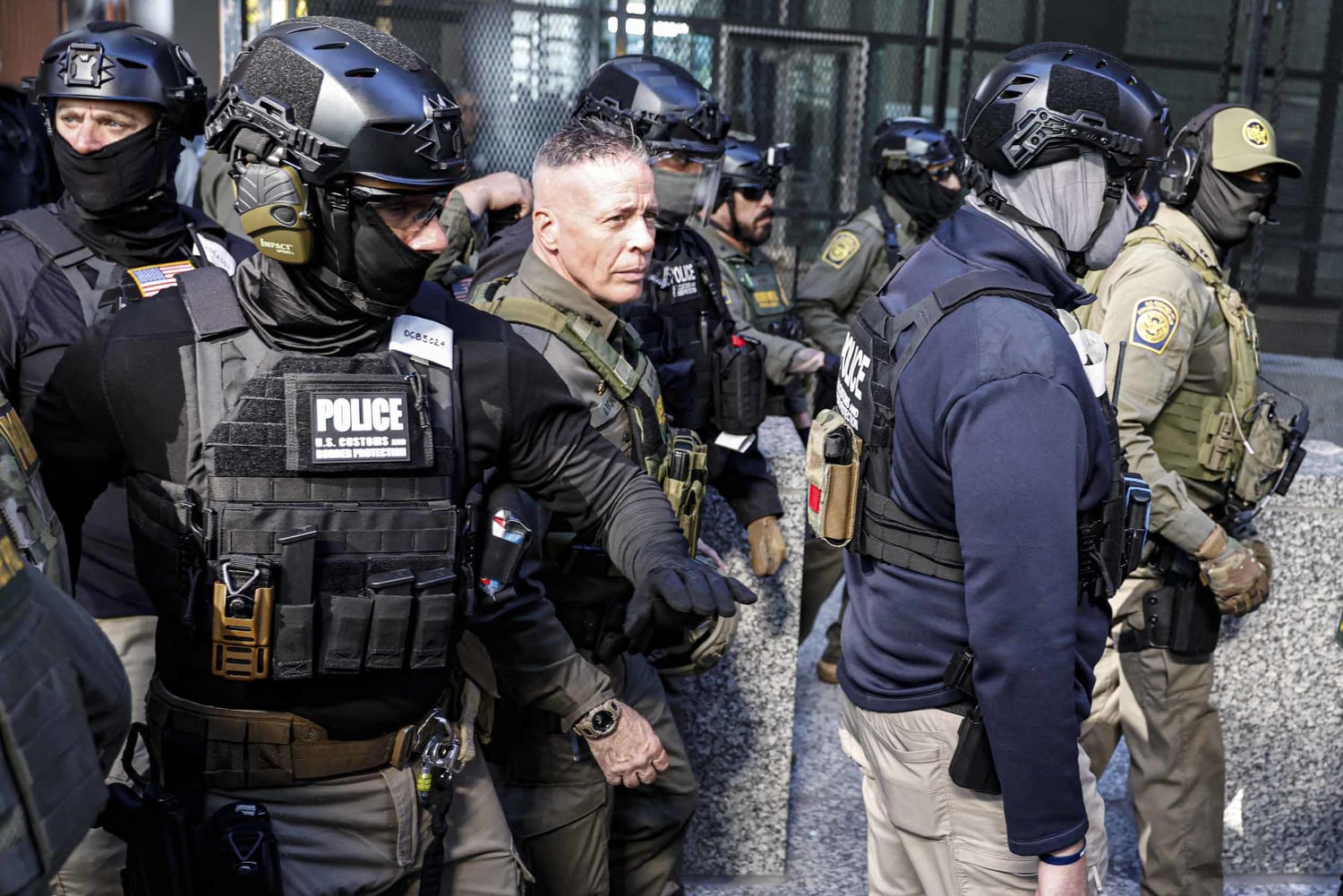A Washington showdown
In recent days, the U.S. Immigration and Customs  Enforcement (ICE) has undergone a sweeping leadership shake-up, one that underscores growing friction inside the Department of Homeland Security (DHS) over how to enforce immigration and deportation policy. What at first seemed like a routine personnel update has instead revealed deeper debates, strategic misalignments, and political stakes that go beyond the day-to-day of arrests and removals.
Enforcement (ICE) has undergone a sweeping leadership shake-up, one that underscores growing friction inside the Department of Homeland Security (DHS) over how to enforce immigration and deportation policy. What at first seemed like a routine personnel update has instead revealed deeper debates, strategic misalignments, and political stakes that go beyond the day-to-day of arrests and removals.
This investigation walks through how the shake-up came about, who’s driving it, what it means for ICE’s operations and reputation, and the broader implications for immigration enforcement and policy in the U.S.

What’s occurring: The shake-up in detail
According to senior DHS sources, ICE field leadership is being replaced or reassigned in many major U.S. cities. At least eight field offices—including Los Angeles, San Diego, Phoenix, Denver, Portland, Philadelphia, El Paso and New Orleans—are affected.
In many of the reassigned roles, officials from U.S. Customs and Border Protection (CBP) or the U.S. Border Patrol are stepping in to head ICE offices.

One DHS official told reporters:
ICE is arresting criminal aliens…They’re hitting Home Depots and car washes.”
While another cautioned:What did everyone think mass deportations meant? Anyone in the U.S. illegally is on the table.”
The motive? The administration appears frustrated that ICE is not delivering to the extent desired. It wants higher numbers of arrests and removals, and leadership changes reflect a push to recalibrate.
In short: a major leadership realignment inside the agency responsible for immigration enforcement — driven by performance pressure, ideological prioritization, and institutional friction.
Why the friction: Strategic—and institutional—fault lines
Differences in enforcement philosophy
There is a clear division within DHS and the broader enforcement apparatus overwho should be prioritized for deportation and how aggressively to act. On one side, officials like Tom Homan (Border Czar) and acting ICE Director Todd Lyons advocate focusing on those with criminal records and final removal orders.
On the other side, DHS Secretary Kristi Noem, senior adviser Corey Lewandowski, and Border Patrol Commander Greg Bovino push for a broader, more visible sweep strategy—targeting all unauthorized immigrants, not just the “worst of the worst.” The tension between “targeted enforcement” vs. “mass sweeps” reflects different risk assessments, political goals, public perception concerns, and resource constraints.

Institutional turf & culture
ICE has traditionally operated under a certain enforcement culture that emphasizes identity verification, due process (for removal-eligible individuals), and partnership with state/local law enforcement. CBP/Border Patrol culture has focused on border incursions, unauthorized entry, and visible control. The infusion of Border Patrol leadership into ICE’s operational field offices signals a cultural shift—and thus internal tension.
It’s getting numbers, but at what cost?” The concern: With a more aggressive posture, ICE may risk alienating local partners, diluting its prioritization strategy, or eroding public legitimacy.
Resource & operational constraints
A leadership shake-up does not automatically fix operational bottlenecks. Analysts note that while arrests may rise, actualremovals (i.e., deportations) depend on detention bed space, diplomatic agreements, transport logistics, and court backlogs. Hence the challenge: Even with new leadership, ICE may struggle to meet ambitious targets. The frustration inside DHS partly stems from expectations outpacing operational capacity.
Immediate consequences: What changes and what to watch
Increased arrests—but not guarantee of more deportations.More aggressive field leadership may boost arrests, especially in urban areas and “non-traditional” zones (far from the border). But removals will likely still lag.

Shift in field tactics and partnerships.Expect ICE to adopt more raid-based, high-visibility enforcement approaches—potentially leading to stronger opposition from sanctuary cities, advocacy groups, and local governments. Reports cite moves into cities like Chicago with greater federal agent presence. Morale and institutional risk.

For career ICE agents and staff, frequent leadership turnover and shifting priorities can create uncertainty—risking morale, retention, and institutional memory.Public relations and legal exposure.More aggressive enforcement invites more scrutiny: civil-rights concerns, local backlash, lawsuits alleging overreach. The new leadership’s style will shape how ICE is perceived.
Policy realignment.
The shake-up may signal broader policy shifts: placing higher emphasis on enforcement volume, integrating CBP/Border Patrol tactics into ICE operations, and possibly changing the thresholds for who is targeted for deportation. This may spill into debates on immigration reform, budget appropriations, and federal–local relations.
Broader implications: Why this matters for immigration and governance
Equity and immigrant communities.
Changes in targeting strategy can affect large numbers of immigrants, including those who may not have criminal records. If enforcement sweeps widen, impacts on families, communities, and local economies may deepen.
Federal–local dynamics.

States and cities already engaged in friction with federal immigration policy may face escalated conflict. Local law enforcement and community groups may face increased pressure or push-backInstitutional precedent.The shift of CBP/Border Patrol personnel into ICE leadership is significant: it blurs the lines between border enforcement and interior enforcement. That may affect how agencies coordinate and how accountability is structured.
Performance vs. legitimacy.The administration is clearly prioritizing metrics (arrest and removal numbers). But enforcement legitimacy rests on lawfulness, due process, community cooperation, and public trust. If legitimacy erodes, enforcement effectiveness may diminish in the long term.
Immigration policy trajectory.
This shake-up may signal that enforcement will be a central axis of immigration policy going forward, possibly at the cost of other dimensions (e.g., integration, humanitarian relief, legal pathways). The leadership changes can influence the overall tone of national immigration strategy.

Key players to monitor
Kristi Noem (Secretary of DHS) – pushing a more aggressive enforcement agenda.
Todd Lyons (Acting Director, ICE) – navigating between enforcement demands and institutional capacity.
Tom Homan (Border Czar) – influential in shaping who gets targeted.
Corey Lewandowski (Senior Adviser to DHS) – playing a role in personnel shake-ups and strategic pivot.
Greg Bovino (Border Patrol leader) – representing the operational culture being infused into ICE.
ICE field directors in major cities – especially those replaced or reassigned: e.g., Los Angeles, San Diego, Phoenix, Philadelphia.

What remains uncertain
The full list of field-office changes and how many of them will go to CBP/Border Patrol officials vs. ICE career leadership.
Whether the shift will produce sustained increases in deportationrates, not just arrests, given logistical and legal constraints.
How local jurisdictions will respond—whether resistance or cooperation will shape outcomes.
The long-term effect on ICE’s institutional identity: will it become more militarised, more enforcement-volume-driven, or will there be push-backs that moderate the shift?
Whether the policy emphasis will remain enforcement-first or be balanced with other immigration strategies (legal pathways, integration, humanitarian concerns).
Conclusion
The leadership shake-up at ICE is not just administrative churn—it is a front-line indicator of deeper policy tensions, institutional evolution, and governmental priorities in immigration enforcement. The fact that the shake-up is happening amid growing friction inside DHS reveals the stakes: this is about enforcing a national mandate, redefining an agency’s mission, and responding to political pressure under tight timelines.
As one DHS official put it: “It’s getting numbers, but at what cost?” The question lingers: how far will policy leaders push the envelope, and what will be the consequences — for the agency, for communities, and for the country’s immigration system
